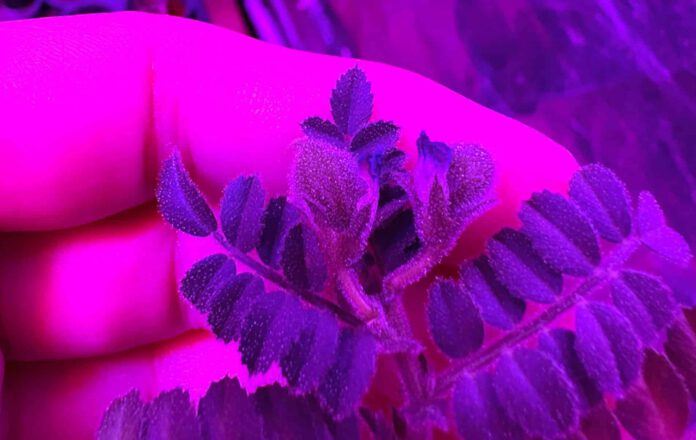
A Remarkable Graduation Project
A student at Texas A&M College of Agriculture and Life Sciences embarked on an extraordinary graduation project – successfully growing chickpeas in simulated lunar soil for the first time ever. This achievement marks a significant stride towards establishing a falafel stand on the moon.
The first to achieve it
Jessica Atkins, the soon-to-be scientist, has achieved an unprecedented accomplishment – growing chickpeas in simulated lunar soil. She accomplished this feat by mixing lunar soil with fungi and worm compost, enabling the chickpeas to grow.
The uniqueness of Lunar Soil
“The moon doesn’t contain soil as we know it on Earth,” explains Atkins. “Earth’s ground is filled with organic material replete with nutrients and organisms, aiding plant growth. On the moon, it’s different; there is no organic matter in the soil. Moreover, the moon displays other challenges for plant cultivation, such as lower gravity, significant radiation, and the presence of harmful substances in lunar soil.” For her graduation project, Atkins developed a kind of fertilizer that could be mixed with lunar soil, facilitating potential plant growth. The research is still subject to peer-review, but can already be accessed online.
Harmful Substances in Lunar Soil
The research utilized simulated lunar soil for a very practical reason – because there simply isn’t enough lunar soil on Earth for experimental purposes. The experiments successfully grew chickpeas in a mixture of 75% simulated lunar soil and 25% compost. The compost is a compound of fungi and vermicompost – worm compost. The worm compost plays a relatively simple role: it provides nutrients for the plant, positively alters the physical properties of lunar dust. Meanwhile, fungi ensure that the majority of harmful substances – naturally found in lunar soil – fail to reach the chickpea plant. Atkins was, thus, able to germinate several chickpea plants in simulated lunar soil.
Farming on the Moon
This research is considered groundbreaking in scientific circles. Atkins’ development could pave the way for future astronauts to eat chickpeas grown directly on the moon. “Chickpeas contain a lot of proteins,” Atkins points out. “They also demand less water and nitrogen than other crops. The beauty of worm compost is that it could even be produced in space, reducing the necessity for supply rockets.”
Finally, Atkins observed a noteworthy detail concerning her research. The primary drawback was that the chickpeas required more time to fully ripen – 120 days instead of the usual 100. Future lunar residents will thus need to practise a little more patience before they can enjoy their chickpeas.











